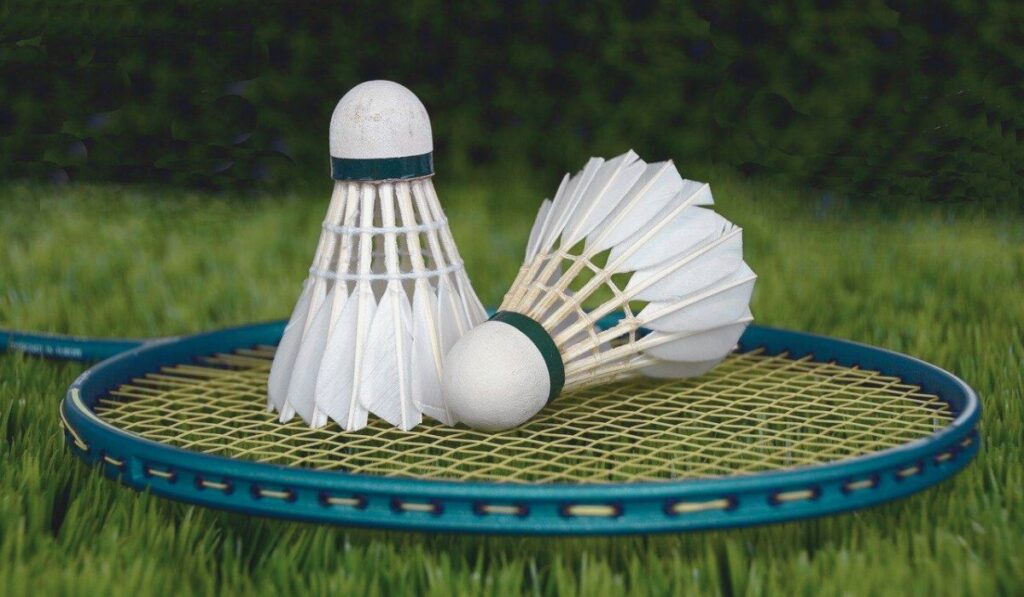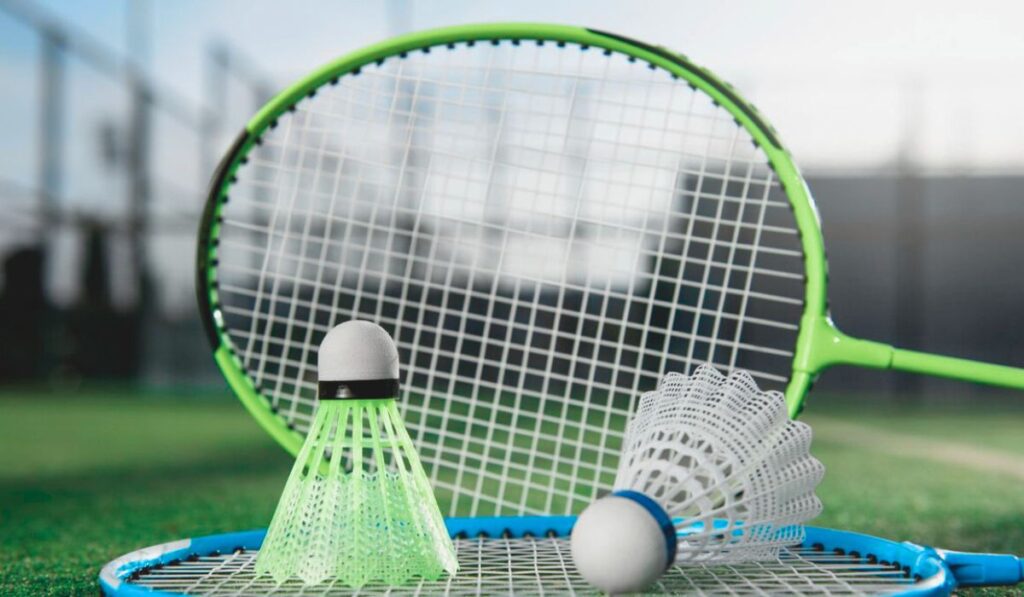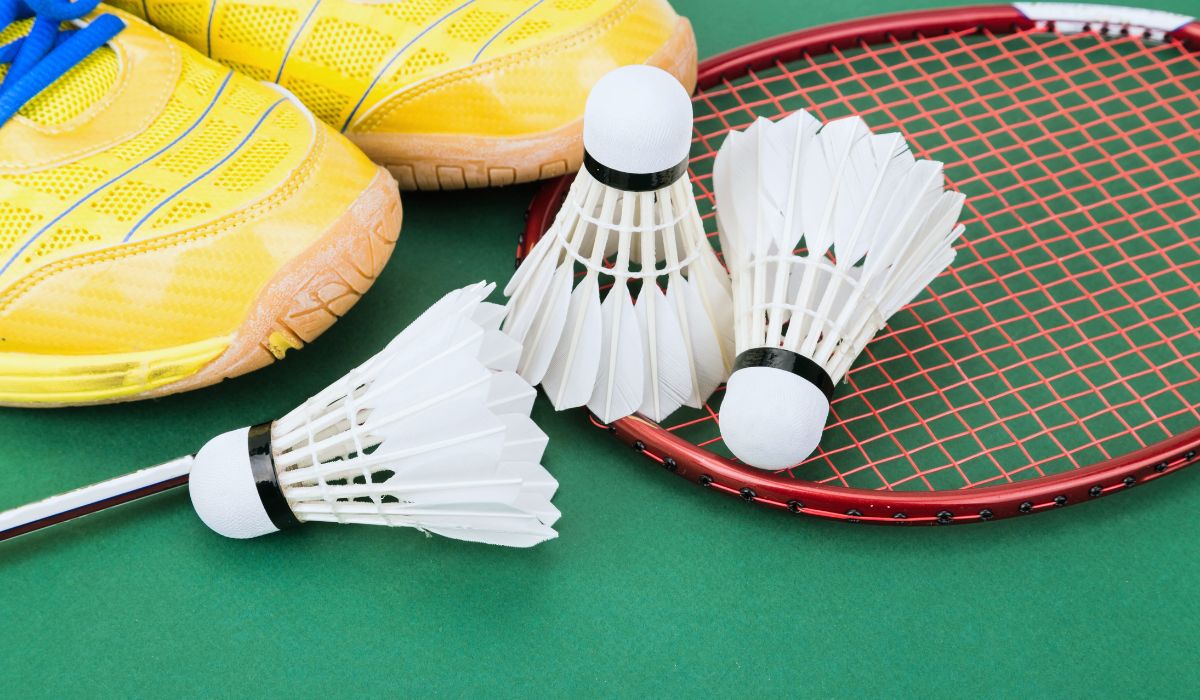Kamachi badminton equipment holds a special place in the budget‑gear segment. It’s the kind of brand that welcomes beginners and occasional players—hideously affordable, sometimes unexpectedly decent, but not without quirks. In this article, I’ll walk you through what makes kamachi badminton gear stand out, where it excels, where it falters, and how to decide if it’s right for your game.
What Kamachi Badminton Rackets Offer Beginners
If you’re just starting out, Kamachi Badminton rackets—like the Diamond Pro‑3000 or Pro‑5509—create a low-risk entry point. Made with aluminium or lightweight alloy shafts, they typically weigh between 90 and 100 grams, making them easy to handle. For around ₹350–₹700, you get a strung, ready‑to-play racket, often with a simple plastic grip and a basic 3/4 cover. This means you can test your swing, get a feel for stroke technique, and learn footwork without worrying about damaging expensive gear—perfect if the learning curve is steep or uncertain.
The Good Part—and the “Less Good”
On the plus side, Kamachi Badminton rackets are light, forgiving, and often sufficient for casual rallies. But they come with risks: string tension may be loose straight out of the box, the frame material can feel flimsy during harder smashes, and durability is hit or miss. Flipkart reviews range from “good quality” to “horrible, don’t buy—it’s a waste.” One user even cited loose strings and poor build quality.
Finding the Right Kamachi Model for Entry‑Level Play
Kamachi’s lineup includes several entry-level models:
- Diamond Pro‑3000: An aluminium racket with minimal weight and basic stringing, ideal for initial training.
- Pro‑7000: Slightly upgraded frame with isometric head shape and standard grip, marketed for attacking play.
- Pro‑5509 or Pro‑1414: Mid-tier builds meant for casual weekend players.
These rackets won’t compete with Yonex or Victor gear—but they allow players to train safely, experiment with strokes, and get to grips with footwork before deciding to upgrade.

What Kamachi Badminton Add to the Game
Although the brand is best known for rackets, some Kamachi badminton combos include entry‑level footwear. These shoes typically offer basic rubber soles and minimal cushioning. They are suitable for light indoor play, but won’t offer support, grip, or performance features found in mid-tier brands. If you plan to play regularly, upgrading to proper court shoes is recommended for ankle safety and stability.
Emotional Balance—Expect Reasonable, Not Miracles
Kamachi Badminton gear should feel like a stepping stone, not a finish line. Don’t expect it to provide perfect smash performance, pinpoint control, or pro-grade durability—that would be unfair. However, if you’re buying to learn, stay fit, and explore whether badminton suits you, it’s a reasonable and emotionally safe choice. The excitement of buying your first racket and physically feeling the swing can be empowering—even if the gear hums, struggles, or breaks by your third session.
Optimizing Kamachi Gear with Thoughtful Tweaks
A few smart upgrades can help you get more from kamachi badminton rackets:
- Replace the factory grip with a sweat-absorbing overgrip to improve comfort.
- Consult a stringer to re-tension the strings tighter if they feel loose.
- Pair the racket with better-quality shuttles or basic court shoes to reduce movement risks.
With small adjustments, the entry-level cost becomes smarter investment.
When It Makes Sense—and When It Doesn’t
Consider these scenarios:
- Ideal Use: You want to try badminton casually or test it with kids. You’re not committed yet. You won’t feel regret if the racket breaks. In this case, kamachi badminton gear gives you access with minimal cost.
- Avoid It: You value control, speed, and competitive edge. You play often or attend training. Spending ₹500 on a flimsy racket now might lead to frustration and repeated replacements later.
How Kamachi Compares to Low‑Cost Alternatives
Compared to similarly priced gear like Velocity or Regail Sports rackets (₹500–₹800 range), Kamachi is comparable or slightly lighter. It offers entry-level build quality but lacks brand polish, stronger frame composites, or tighter quality control. Some users find Velocity more durable, though Kamachi often edges out on price. Ultimately, the differences are subtle—and riding that micro-margin is useful only if you’re already committed to buying low-cost sport gear.
Kamachi’s Role in the Budget Badminton Market
Kamachi Badminton fills a very specific and important gap in the Indian sports equipment market—it caters to those who are eager to start playing but don’t have the budget for premium gear. Think students, beginners, hobbyists, or people who play in local parks rather than formal courts. These are users who just need a racket to get started, and Kamachi makes that possible. It strips away the flashy marketing and unnecessary features, giving users something simple and serviceable. That accessibility is a big reason why Kamachi is still a go-to choice for new players even in 2025.
Kamachi Badminton Gear for Children and Schools
One overlooked audience for Kamachi gear is school students. Many schools purchase sports equipment in bulk, especially for physical education programs, and Kamachi rackets offer a low-cost way to introduce badminton to large groups of kids. The rackets are light, easy to swing, and not intimidating, which matters a lot for children who are just beginning to understand the game. They’re not high-performance tools—but that’s okay, because most children don’t need them to be. In this context, Kamachi gear serves as an excellent starting block for young talent.
Why Beginners Shouldn’t Chase Expensive Gear First
Too many beginners fall into the trap of thinking that the most expensive racket will magically improve their skills. In reality, the early stage of badminton is all about building form, footwork, consistency, and confidence. You don’t need a ₹5000 Yonex racket to learn how to serve or return. What you need is a racket that feels comfortable and encourages practice without fear of breaking or losing it. Kamachi rackets give you that space to make mistakes, hit the shuttle too hard or too soft, and still enjoy the game without any guilt or financial worry.
Kamachi Combos: Racket Sets with Extras
Kamachi doesn’t just sell single rackets—they also sell combo sets that include two rackets, shuttlecocks, a net, and sometimes even a carrying bag. These sets are perfect for families or friend groups who want to casually play at home or in local parks. For less than ₹1000, you can get a setup that lets two people play, and that’s a huge value for the casual user. You won’t find ultra-durable rackets or feather shuttles in these sets, but for backyard play or weekend rallies, they’re more than good enough.
The Durability Question—How Long Does Kamachi Last?
This is a common concern. Kamachi rackets don’t last forever—nor are they meant to. On average, with regular but gentle use, a Kamachi racket might last 3 to 6 months. If you’re aggressive with smashes or if your game involves fast wrist action and sharp angles, expect signs of wear much earlier. However, some users report their Kamachi rackets lasting a year or more, especially if used sparingly. Ultimately, durability depends on how often and how intensely you play—but since replacements are affordable, the short life span doesn’t feel like a big downside.
Kamachi Grip Quality—A Real Weak Spot
One thing that almost everyone agrees on: the stock grip on a Kamachi racket is usually poor. It’s either a thin foam wrap or a plastic-like texture that gets slippery with sweat. That’s a problem, especially in humid climates like most of India. The good news? You can easily replace or layer the grip with a better one. A high-quality overgrip from brands like Yonex or Li-Ning costs ₹100–₹200 and instantly transforms the feel of the racket. This small upgrade can make your Kamachi racket much more playable and comfortable for longer sessions.
The Design and Aesthetics of Kamachi Rackets
Kamachi rackets aren’t flashy. You won’t find elegant finishes, carbon graphite shafts, or laser-cut grommets. But the designs are usually bright and friendly—often in red, blue, or multicolor finishes. For young players and casual users, the simple design is appealing. It signals fun and play, not competition and pressure. Of course, serious players might not be impressed—but for its target audience, the visual aesthetic is inviting and accessible. It doesn’t need to look premium; it just needs to be something that makes you want to play.
Kamachi in Urban vs. Rural India
Interestingly, Kamachi has found a place in both urban and rural India, but for different reasons. In cities, it’s often a “starter” or spare racket—a stepping stone before moving on to Li-Ning or Yonex. In smaller towns and villages, where access to sports gear is limited, Kamachi might be one of the only affordable brands available. Local sports shops or online marketplaces like Flipkart and Amazon make Kamachi one of the few names people recognize. That trust, built over years, is what keeps the brand relevant across income and access levels.
Kamachi and Online Reviews: Mixed but Telling
If you go through customer reviews on platforms like Flipkart or Amazon, you’ll notice a consistent pattern: ratings range between 3.5 to 4 stars. Some buyers rave about how it exceeded their expectations for the price. Others complain about the frame bending or strings loosening within weeks. What this tells us is simple—Kamachi delivers value if your expectations are realistic. If you treat it as a beginner or casual-use product, it serves its purpose well. If you expect pro-level performance for ₹500, you’re bound to be disappointed.
Kamachi vs. Cosco and Nivia
When comparing Kamachi with other entry-level Indian sports brands like Cosco or Nivia, the differences are minor but worth noting. Cosco rackets are often slightly sturdier, while Nivia might offer slightly better grip quality. However, Kamachi tends to undercut them in price, making it the most accessible. Performance-wise, they’re all in the same zone—low tension strings, average build, and basic designs. If you’re choosing among them, go for whichever model suits your weight and size preferences best. Kamachi is usually the lightest, which makes it great for kids and absolute beginners.
Can Kamachi Gear Support Coaching or Training?
Kamachi rackets can be used in early-stage coaching or introductory badminton classes. Many local coaches use Kamachi gear for their first-level students. The rackets are great for warm-ups, hand-eye coordination drills, and rally basics. However, once students begin developing real stroke power or control, they quickly outgrow Kamachi equipment. Coaches often advise upgrading after a month or two of consistent training. So, while Kamachi is fine for training at Level 1, don’t expect it to take players through intermediate or advanced lessons without showing limitations.
Storage and Care Tips to Extend Life
One of the most effective ways to extend the life of your Kamachi racket is by storing it correctly. Avoid leaving it in the sun, inside a hot car, or in damp spaces. These environmental factors weaken the strings and warp the frame. After each game, wipe the grip dry and store the racket in its cover. If possible, hang it vertically instead of laying it flat under heavy objects. These simple care habits can add weeks—or even months—to the lifespan of a low-cost racket like Kamachi.
What Kamachi Tells Us About Sports Culture in India
Kamachi is more than just a racket brand—it’s a reflection of how sports culture in India is changing. With badminton gaining popularity across age groups and regions, people are more eager than ever to participate. But economic realities mean not everyone can afford premium brands. Kamachi meets this demand head-on, making sure no one is left out due to cost. In doing so, it helps democratize access to the sport, which is critical for building a strong grassroots-level player base in India.
Who Should Absolutely Avoid Kamachi?
While Kamachi works for beginners, there are specific players who should avoid it entirely. If you’re playing tournaments, attending academy-level training, or playing five days a week, Kamachi simply won’t hold up. Competitive players need tension consistency, durable frames, balanced weight distribution, and responsive control. Kamachi rackets are not built for those needs. Using one in such scenarios may cause injury, poor stroke habits, or just frustration. For serious players, it’s better to invest once in a mid-range brand that will support long-term progress.
Kamachi Isn’t Perfect, But It Plays Its Part
At the end of the day, Kamachi badminton gear isn’t trying to be the best—it’s trying to be enough. And for many players, especially at the start of their journey, that’s all they need. A racket that lets them learn, explore, and enjoy the game without breaking their budget. Is it flawless? No. But is it functional, accessible, and empowering for new players? Absolutely. If you approach Kamachi with the right expectations, it can be the foundation of your badminton journey—not the limitation.
A Closer Look at Kamachi’s Durability Factor
One of the most emotionally satisfying elements of owning a Kamachi badminton racket or kit is the lasting durability. For many, the frustration of investing in a product that chips, warps, or breaks after a few uses is all too familiar. Kamachi products, however, offer a level of build quality that eases those worries. Whether you’re playing casually on weekends or using the equipment for intense training sessions, the structural integrity holds up surprisingly well. This dependability is especially valuable for families and coaches who don’t want to replace gear frequently. The peace of mind that comes with owning durable equipment translates to better focus and performance on the court.

Kamachi Badminton for School and College Players
Students in schools and colleges often need accessible yet high-performing badminton gear. Kamachi has become a trusted name in academic institutions across India because it balances affordability and quality perfectly. Budget constraints shouldn’t keep young athletes from accessing well-made equipment. The brand’s rackets, nets, and shuttlecocks are easy to maintain, transport, and store, making them ideal for group coaching sessions and inter-school competitions. Kamachi encourages athletic discipline early in life by providing the right tools for structured practice, without intimidating price tags.
Is Kamachi Only for Beginners? Let’s Break the Myth
There’s a lingering misconception that Kamachi badminton gear is only suitable for beginners or recreational players. While it’s true that the brand caters to newcomers with user-friendly products, it also provides equipment that meets the standards of intermediate and even semi-professional players. Rackets with higher string tension, aerodynamic designs, and enhanced grips are available in their upper-tier lineup. These allow players to experiment with spin, control, and power in their shots. Dismissing Kamachi as a “starter-only” brand would be a missed opportunity for those looking to grow without spending excessively on international brands.
Kamachi Badminton: Affordable but Never Basic
Affordability is often equated with basic functionality or poor quality. Kamachi breaks this stereotype in the most surprising way. Despite being priced lower than many mainstream competitors, the equipment does not feel or perform like a compromise. The thoughtful design, decent balance, and visually appealing finishes make it feel far more premium than expected. It’s a tactile experience—holding a Kamachi racket doesn’t feel like holding a cheap toy; it feels like a real sporting tool. This balance of value and performance is what attracts repeat customers and garners word-of-mouth appreciation.
Final Word Proceed Wisely with Kamachi Gear
If you’re looking for a no-frills, budget racket to begin your badminton journey, kamachi badminton gear can empower you at a price that encourages experimentation—not regret. Just know what you’re signing up for: entry-level materials, variable quality, and limited lifespan. For committed or competitive players, the braces of Yonex, Li-Ning, or Victor offer performance and longevity worth the investment. But for testing waters, learning basics, or casual play—Kamachi is a practical, no-pressure option.


2 thoughts on “Unlock Your Badminton Journey with Kamachi or Regret Overspending”